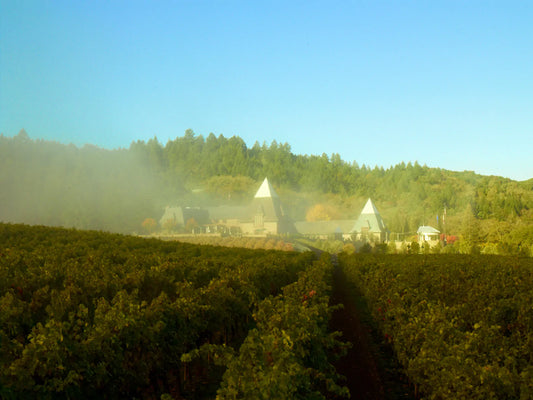California: Mass wines and classy wines


With its 240,000 ha, it produces more than 90% of American wines. The main region for New World wines, California has successfully moved into the league of prestige wines where it plays a determining role.
California is a relatively young wine region. Visions and expectations regarding production methods vary from one region to another. The production of mass wines rubs shoulders with the production of prestige wines. American wineries orient the style of their wines strongly to the expectations of their customers and do so with success. The diversity of California's climatic zones allows the production of a wide range of grape varieties, primarily of international reputation. Chardonnay is the most widely planted, followed by Cabernet Sauvignon , Merlot and Zinfandel (from the Primitivo family of southern Italy). There is also Sauvignon Blanc and Syrah in warmer regions and even Moscato (Muscat).
California extends over 1,000 km from north to south. However, the east or west position plays a more determining role. Near the coasts, cool and humid fog banks are common but they do not penetrate inland, which are protected by hills that can exceed 1,000 m in altitude. Thus the vines are found mainly in valleys. The climate varies from one valley to another; if for example the Central Valley is considered a warm region, the Anderson Valley is attributed a cold climate.
The California wine region is divided into 6 regions: The most famous is undoubtedly the “North Coast” region which includes Sonoma County and the Napa Valley.
The success of Napa Valley wines is closely linked to Inglenook Winery in Rutherford. It was the first winery in California to produce wines inspired by the style of Bordeaux wines. In 1889 this winery already won prizes in tasting competitions in Paris. After Prohibition, Californian viticulture embarked on mass wine production. The decisive trigger came in 1976 with the “Judgment of Paris”. During this blind tasting, world-renowned experts gave higher marks to Napa wines than to Bordeaux Grands Crus Classés. A hard blow for the French. Napa is a narrow valley surrounded by the “Mayacama Mountains” and the “Coast Ranges”. In the north, the summer months can be very hot. So it's no surprise that this region produces rich and opulent Cabernet Sauvignon. Napa represents 4% of California wine volume, but 20% by value. This is clearly a quality wine region. Compared to Napa, Sonoma is considered a cooler region. While Napa is best known for its Cabernet Sauvignon, Sonoma shines with its Chardonnay, Zinfandel and Pinot Noir . Sonoma County is subdivided into several sub-regions: Russian River, Dry Creek Valley, Alexander Valley, Sonoma Valley and Carneros, each with its own characteristics.
